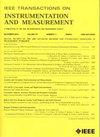Multiview Contrastive Shapelet Learning: A Novel Semi-Supervised Approach for Explainable Machine Fault Diagnosis With Insufficient Annotated Data
IF 5.6
2区 工程技术
Q1 ENGINEERING, ELECTRICAL & ELECTRONIC
IEEE Transactions on Instrumentation and Measurement
Pub Date : 2025-06-18
DOI:10.1109/TIM.2025.3580850
引用次数: 0
Abstract
Rotating machinery plays a vital role in modern industry, whose failures may cause sudden damage to the equipment and affect the reliability and safety of the whole mechanical system. Although numerous deep learning-based methods have emerged in industrial fault diagnosis, most of them suffer from two key limitations. First, the majority of these techniques are predicated on the assumption of abundant data availability. In practical industrial settings, however, labeled samples are limited, rendering these methods ineffective under such constraints. Second, a significant limitation of these intelligent methods lies in their lack of interpretability, which hampers their applicability in high-reliability fault diagnosis systems. To address these problems, this article proposes a multiview contrastive shapelet learning (MCSL) framework for semi-supervised fault diagnosis of rotating machinery. MCSL leverages both a supervised contrastive learning (SCL) module and a self-supervised contrastive learning (SSCL) module to comprehensively exploit labeled and unlabeled vibration signals. In SCL, a shapelet learner block is used to extract key explainable patterns from labeled vibration signals. Subsequently, the SCL algorithm is employed to minimize the feature distance between the original sequence and the extracted shapelets. In SSCL, several data augmentation techniques are first applied. Then, the augmented data are fed into the shapelet learner block. Furthermore, an interactive convolutional block is employed to extract multiscale features. The parameters of the MCSL model are updated within an integrated training framework. Through experimental validation utilizing both public and self-collected datasets, it is evident that MCSL not only outperforms state-of-the-art methods in diagnostic accuracy, but also demonstrates enhanced interpretability, underscoring its significant potential for industrial applications.多视图对比Shapelet学习:一种新的半监督方法,用于缺乏注释数据的可解释机器故障诊断
旋转机械在现代工业中起着至关重要的作用,其故障可能导致设备的突然损坏,影响整个机械系统的可靠性和安全性。尽管在工业故障诊断中出现了许多基于深度学习的方法,但大多数方法都有两个关键的局限性。首先,这些技术中的大多数都是基于大量数据可用性的假设。然而,在实际的工业环境中,标记的样品是有限的,使得这些方法在这样的约束下无效。其次,这些智能方法的一个重要局限性是缺乏可解释性,这阻碍了它们在高可靠性故障诊断系统中的适用性。为了解决这些问题,本文提出了一种用于旋转机械半监督故障诊断的多视图对比形状学习(MCSL)框架。MCSL利用监督对比学习(SCL)模块和自监督对比学习(SSCL)模块来综合利用标记和未标记的振动信号。在SCL中,使用形状学习块从标记的振动信号中提取关键的可解释模式。然后,利用SCL算法最小化原始序列与提取的shapelets之间的特征距离。在SSCL中,首先应用了几种数据增强技术。然后,将增强的数据输入到shapelet学习块中。此外,采用交互式卷积块提取多尺度特征。在综合训练框架内更新MCSL模型的参数。通过利用公共和自我收集的数据集进行实验验证,很明显,MCSL不仅在诊断准确性方面优于最先进的方法,而且还展示了增强的可解释性,强调了其在工业应用中的巨大潜力。
本文章由计算机程序翻译,如有差异,请以英文原文为准。
求助全文
约1分钟内获得全文
求助全文
来源期刊

IEEE Transactions on Instrumentation and Measurement
工程技术-工程:电子与电气
CiteScore
9.00
自引率
23.20%
发文量
1294
审稿时长
3.9 months
期刊介绍:
Papers are sought that address innovative solutions to the development and use of electrical and electronic instruments and equipment to measure, monitor and/or record physical phenomena for the purpose of advancing measurement science, methods, functionality and applications. The scope of these papers may encompass: (1) theory, methodology, and practice of measurement; (2) design, development and evaluation of instrumentation and measurement systems and components used in generating, acquiring, conditioning and processing signals; (3) analysis, representation, display, and preservation of the information obtained from a set of measurements; and (4) scientific and technical support to establishment and maintenance of technical standards in the field of Instrumentation and Measurement.
 求助内容:
求助内容: 应助结果提醒方式:
应助结果提醒方式:


